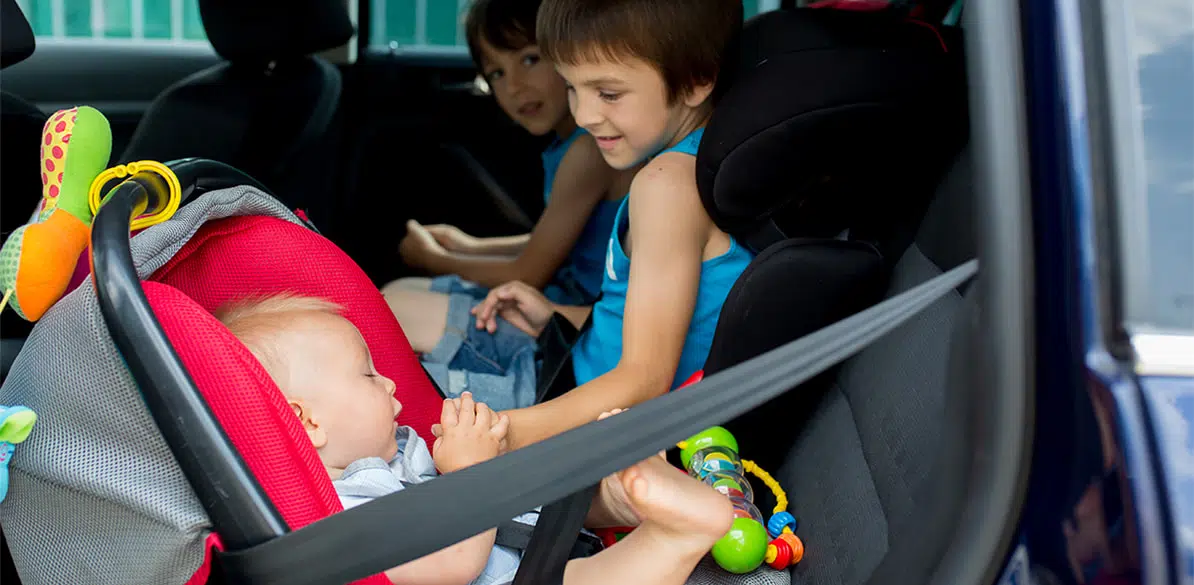How to travel safely with 3 children
Here are the secrets to traveling with 3 children in the rear seats of your car

Road Safety
I once heard a child safety expert say, “As the old Spanish saying goes, every baby comes with a loaf of bread under its arm, but the third baby comes with a minivan,” and in a way, it is true.
During the creation of UN Regulation 129, studies were made on the capacity of cars to carry 3 chairs in the rear seats, and it was observed that, among about 100 cars tested, only 5 could fit 3 chairs in the rear seats, and yes, all 5 were minivans. Obviously, the tests were carried out with the maximum CRS sizes allowed by the Law, and with 3 child car seats with a height range of 40 to 105 cm (between 0 and 4 years old).
Unsurprisingly, when using higher range child car seats, things do not improve; it is very difficult to fit 3 child restraint systems with a range of 100 to 150 cm in a car.
However, as we mentioned, this scenario is not the most likely, as what we will probably find inside a car is a combination of child restraint systems of different ranges, which will make installation more feasible.
Keep in mind that cars have more space for the shoulders than for the hips, so we should use this to our advantage.
Rear-facing child restraint systems take up little shoulder space in the car, but take up a lot of seat space, while forward-facing child car seats take up more shoulder space and just as much hip space. Lastly, booster seats with backrests take up more shoulder space and less hip space.
The combination that allows us to better use the space in the rear seats is alternating different types of child restraint systems.
Let’s give some examples. If we have 2 children who use booster seats with backrests (100 to 150 cm tall) and a baby, we should place the older children in the outer seats, facing forward, while the baby should travel facing backwards in the center seat.
In this case, we will probably have to avoid the use of child restraint systems with ISOFIX, since the position of the anchorages (normally, cars only have them on the outer seats) makes it impossible to place this kind of CRS in the central seat. Actually, in this context, ISOFIX anchorages do not contribute as much as in forward-facing seats with a range of 76-105 cm, where the use of the ISOFIX system is highly recommended to increase the child’s “survival space”.
Therefore, installing two boosters in the lateral seats and a rear-facing CRS in the central seat is the best solution.
We discourage the use of any device that may move the ISOFIX CRS to increase interior space, as it is not necessary. Not attaching the child car seat to the ISOFIX anchorage is enough to gain space inside the vehicle (provided that the CRS allows this).
In the opposite scenario, and following the alternation theory, we should place the two child restraint systems for the younger children facing backwards on the outer seats, while the booster for the older child should go in the central seat.
If we had 3 rear-facing child restraint systems, we would have to take the subway when going to buy the child car seats. Not all child restraint systems have the same width, so this is an important factor to consider when choosing a CRS. In addition, we advise not to buy 3 identical child car seats, since with different types of CRS we can gain a few millimeters given the shape and height of each child car seat, which can be decisive.
As you can see, we have not considered the option of any child under 4 years of age traveling forward-facing. Fundación MAPFRE promotes the use of rear-facing child restraint systems up to 4 years of age, as it is the safest position for children.
